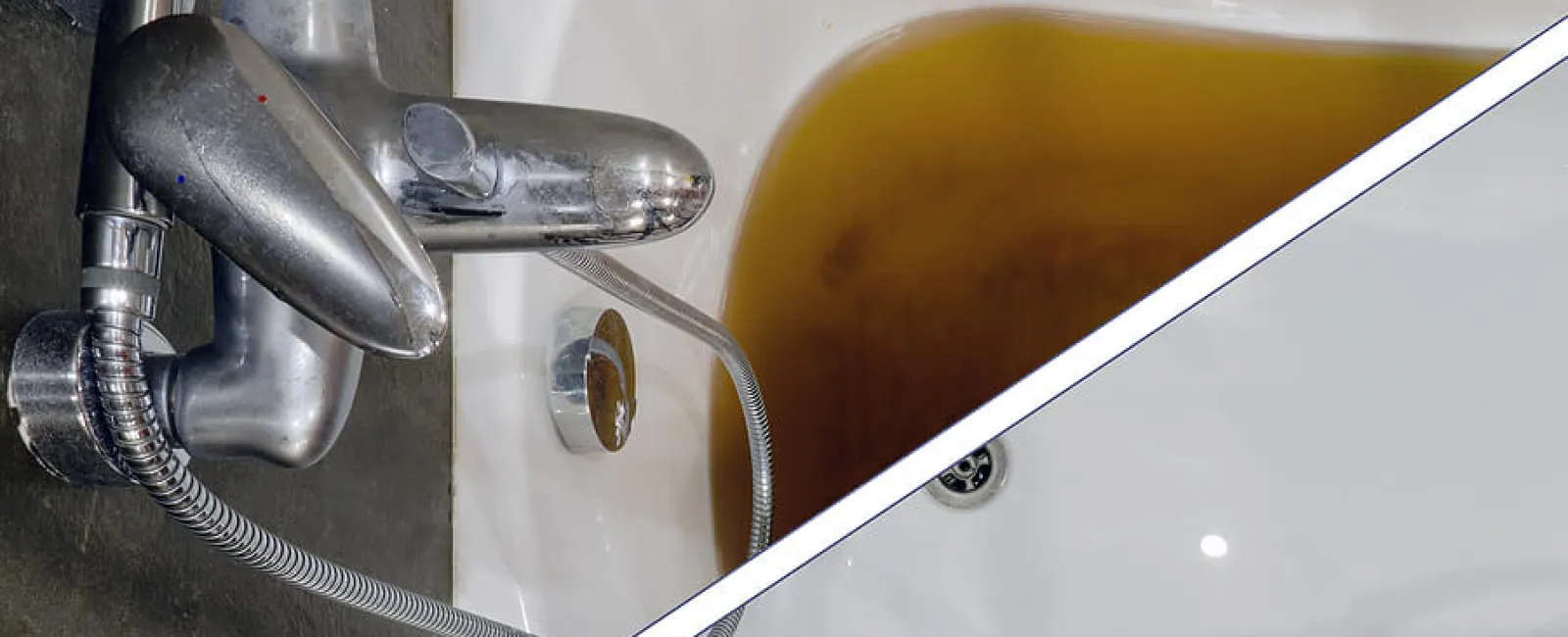They are making a number of great pointers about Water Coming up Bathtub Drain overall in the content on the next paragraphs.

Sewage backup in the bath tub can be a distressing and unhygienic trouble for any type of home owner. Not just is it bothersome, yet it also presents major health and wellness dangers and suggests underlying concerns with the plumbing system. Recognizing why sewer is coming up via the bathtub is essential for taking ideal action to address the issue successfully.
Intro to the Issue
Typical Reasons for Sewer Back-up
Blockages in the Drain Line
Among the most common reasons for sewage backup is a blockage in the drain line. This can take place because of the build-up of particles, oil, or foreign objects in the pipes, protecting against appropriate circulation and creating sewer to back up right into your bath tub.
Tree Origin Invasion
Tree roots seeking wetness and nutrients can penetrate drain lines through tiny fractures or joints. In time, these origins can grow and broaden, triggering substantial damages to the pipelines and leading to sewer back-up issues.
Comprehending the Trouble
When sewage starts backing up into the bathtub, it's a clear indication of an issue with the drain system. The wastewater that ought to be flowing far from your home is rather discovering its way back right into your living space, which can bring about significant damages and carcinogen.
Potential Causes
A number of factors can contribute to sewer backup in the bath tub. From blockages in the drain line to concerns with the plumbing framework, determining the source is essential for discovering a remedy.
Aging Infrastructure
Older homes may have dated plumbing systems that are much more prone to deterioration, fractures, and deterioration. As pipelines age, they come to be much more vulnerable to leakages and obstructions, boosting the chance of sewer backup incidents.
Heavy Rainfall or Flooding
Throughout durations of heavy rainfall or flooding, the sewer system may become overloaded with excess water, creating back-ups and overflows. This can result in sewer backing up right into tubs and various other components inside the home.
Indicators of Sewer Backup
Foul Odors
Unpleasant odors emanating from drains or fixtures, especially in the bathroom, may indicate sewage back-up issues. These smells are frequently strong and consistent, signaling an issue that requires prompt attention.
Slow Draining Fixtures
Tubs, sinks, and commodes that drain gradually or not at all could be experiencing sewer back-up. If multiple components are affected all at once, it's most likely that the problem originates from an usual point, such as the primary drain line.
Gurgling Sounds
Odd gurgling or bubbling sounds originating from drains pipes when water is running in other places in your home are a sign of air trapped in the plumbing system. This air accumulation can result from sewage back-up and need to be checked out without delay.
Health Dangers Associated with Sewer Back-up
Contamination of Supply Of Water
Sewer back-up can contaminate the supply of water in your house, presenting a serious health danger to you and your household. Exposure to infected water can lead to stomach concerns, skin infections, and various other illnesses.
Mold Development
Moisture from sewer backup can develop perfect problems for mold and mildew growth in your house. Mold spores can aggravate respiratory problems and cause allergies in delicate individuals, making timely clean-up crucial.
Spread of Disease
Sewer contains damaging bacteria, infections, and bloodsuckers that can create a variety of diseases, consisting of hepatitis, cholera, and gastroenteritis. Entering into contact with sewage or contaminated surface areas puts you in jeopardy of infection.
Tidying up After Sewer Backup
Disinfection Procedures
Thoroughly sanitize and disinfect impacted locations after sewer backup to eliminate hazardous bacteria and stop mold growth. Usage proper cleaning items and protective gear to guarantee secure and efficient cleanup.
Reconstruction of Affected Locations
Fix any kind of damage to flooring, wall surfaces, or components triggered by sewage back-up. Relying on the level of the damages, you might require to replace carpets, drywall, or various other materials to restore your home to its pre-loss condition.
Immediate Actions to Take
Turning Off Water Supply
In the event of sewage backup, it's necessary to switch off the water to prevent more contamination and damages. Locate the primary water shutoff valve in your home and closed it off up until the problem can be fixed.
Contacting a Professional Plumber
Managing sewer back-up is not a DIY task. Contact an accredited plumber with experience in taking care of sewage-related concerns to examine the situation and do essential fixings or cleanings.
Staying Clear Of Contact with Contaminated Water
Till the sewage back-up is solved, avoid contact with polluted water to prevent the spread of germs and pathogens. Wear protective gear if you should remain in the damaged area and clean your hands completely afterward.
Safety nets
Routine Maintenance of Sewage System Lines
Schedule regular examinations and maintenance of your sewer lines to determine and attend to possible concerns prior to they rise into significant issues. This can consist of cleaning out debris, examining for tree root intrusion, and fixing any broken pipes.
Installing Bayou Valves
Take into consideration setting up bayou valves in your plumbing system to prevent sewer from receding right into your home during periods of heavy rainfall or flooding. These shutoffs immediately close when water draws back up, securing your residential or commercial property from contamination.
Appropriate Disposal of House Waste
Stay clear of flushing anything aside from toilet paper and human waste down the bathroom to prevent obstructions and clogs in the sewer line. Dispose of grease, oil, and various other house chemicals correctly to minimize the danger of plumbing troubles.
Why Is Water Backing Up in My Bathtub When I Flush My Toilet?
What to do about a sewer line clog
First, don’t bother with plunging. No amount of plunging will dislodge the clog in a sewer line. The clog is too far away. Plungers are for clogs in the toilet itself, not the sewer line. Plus, the most likely causes of a sewer clog are:
Tree roots Flushed toys or feminine products Grease buildup Those items don’t move easily. And in the case of tree roots, the roots need to be cut out of the pipe and the pipe will need to be repaired.
You’ll need a closet auger. A closet auger is a type of plumber’s snake with a protective cover to keep from scratching the delicate porcelain toilet. If the clog is further down, you may need to remove the toilet or use one of your cleanouts to get to the clog.
We also recommend doing a video inspection of the drain to ensure that the cause of the clog has been completely removed. Otherwise, you could have the same problem again in a few days or weeks.
https://mspplumbingheatingair.com/blog/why-is-water-backing-up-in-my-bathtub-when-i-flush-my-toilet

I recently found that entry about while browsing the web. Enjoyed our blog posting? Please quickly share it. Help someone else discover it. Thanks a lot for taking the time to read it.
This Site